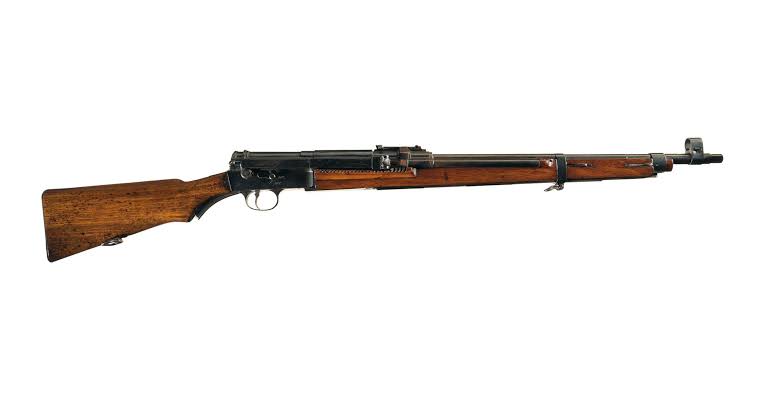
In the early 20th century, European armies still relied almost exclusively on manual bolt-action rifles. However, some designers began exploring semi-automatic weapons, seeking to increase the rate of fire without relying on complex automatic systems.
One such pioneer was Rudolf Frommer, chief engineer at FÉG (Fegyverés Gépgyár), Hungary’s leading arms manufacturer. He was already known for his innovative pistols, such as the Frommer Stop, and decided to apply similar principles to the development of a semi-automatic infantry rifle.
Around 1909, Frommer developed a long-recoil rifle, a rare and mechanically sophisticated system. This system was also used in the famous Browning Auto-5 rifle.
After firing, the barrel and bolt recoil together for a long distance.
Upon reaching the end of their travel, they separate: the barrel returns first, followed by the bolt, which ejects the fired cartridge and feeds the next.
It’s a robust but complex system, and difficult to keep clean and reliable on the battlefield—especially with high-powered cartridges like the 7.92×57mm Mauser.
Operating System: Long Recoil
Caliber: 7.92×57mm Mauser
Capacity: 5 rounds (internal magazine, stripper clip)
Heavy Recoil, due to the moving mass and caliber
Reasons for Failure
Mechanical Complexity:
The long recoil system requires heavy parts, strong springs, and precise synchronization—unsuitable for an infantry weapon.
Production Cost:
Extremely high compared to conventional bolt-action rifles, such as the Steyr-Mannlicher M95.
Conservative military doctrine:
Officers at the time considered a high rate of fire a waste of ammunition and feared overheating or malfunction.
No official demand:
The Austro-Hungarian army did not request semi-automatic rifles, preferring established systems.




